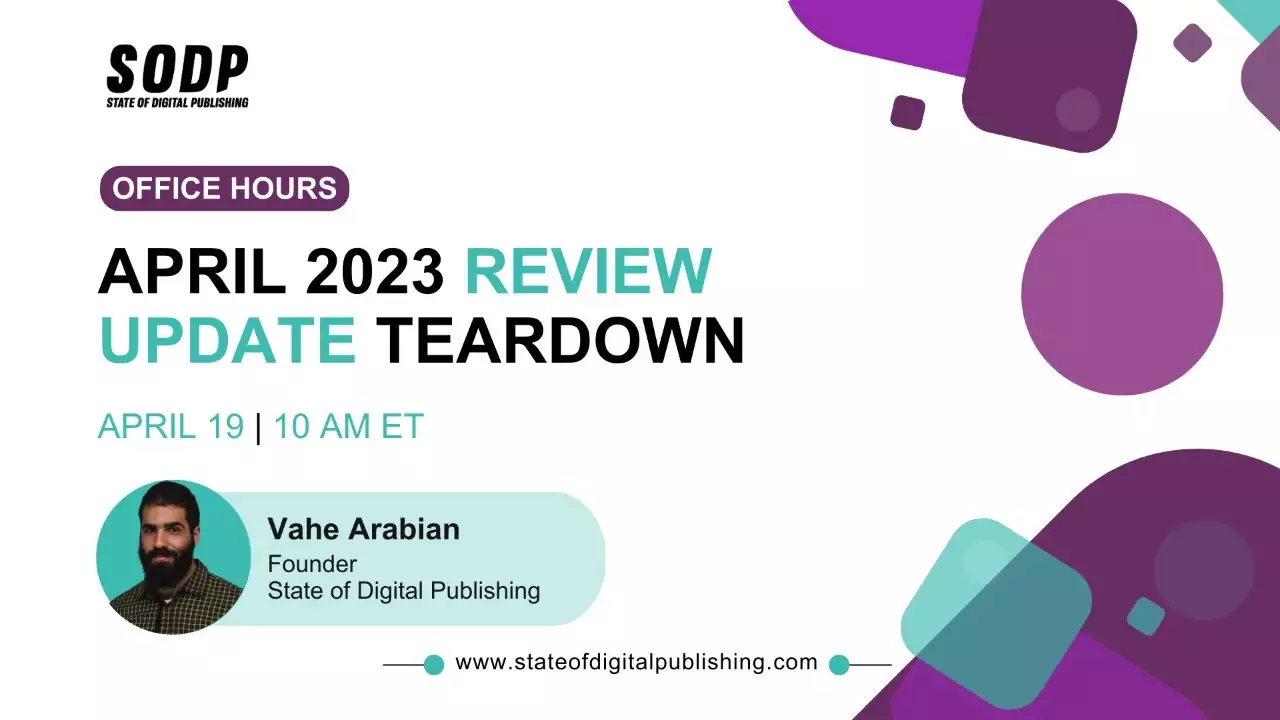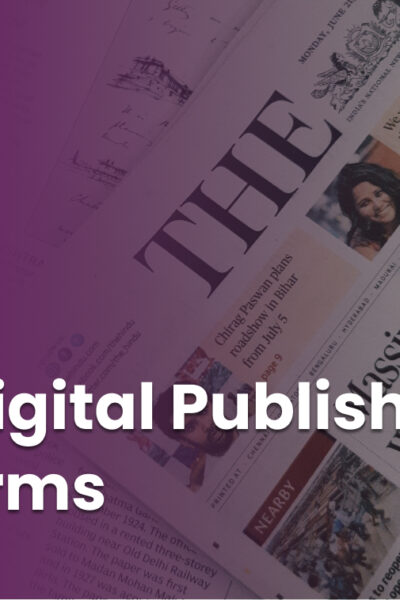With the rise of social media as a means of both mass and personal communication, it would be easy to believe that email publishing is in decline. However, this couldn’t be further from the truth. According to The Radicati Group’s Email Statistics Report, 2015-2019, there were some 2.6 billion email users in 2015, a number that is set to rise by 300 million to over 2.9 billion by the end of 2019.
While Radicati acknowledged that the number of email accounts per person would rise over that period, from 1.7 to 1.9, “over one-third of the worldwide population will be using email by year-end 2019”. As a final little (actually, massive) stat from the report, the total number of emails sent per day will increase at a rate of around 3% per year, from 205 billion to over 246 billion by 2019.
And while Facebook, Instagram and even more professional social networks such as LinkedIn continue to grow, as long as email remains the prevalent form of communication in the business world, and as long as any form of eCommerce requires a consumer to have an email account, an email will continue to boom as a platform.
In fact, as Inside.com have outlined in their Email Manifesto, email is in fact “the largest social network in the world and the only large social network that remains an entirely open protocol”.
Inside.com’s Email Manifesto
Email publishing business Inside.com outlines this belief in its aforementioned Email Manifesto, in which they have outlined why they focus so intently on email as a means of communication. Essentially, it’s a matter of having to work harder to get cut-through in an increasingly cluttered market, but reaping greater benefits as a result of earning trust.
Citing that most marketers focus their efforts on traffic driven by Facebook, which means “writers – regardless where they work – are aware of virality, shareability, and engagement with each story they write”. The way Inside.com seeks to set itself apart is by delivering specifically curated content, chosen by “passionate editors” rather than “soulless algorithms”, directly to a subscriber’s inbox. And by delivering that reliable content regularly, as well as promising to “actively read every reply to our emails”, they aim to build trust and a genuine rapport with their audience.
It’s great advice on how to build an audience for your own email efforts – deliver a consistently high-quality product and aim to create a genuine sense of community even in a two-way platform. In fact, Inside.com banks almost solely on this promise, saying, “if we don’t deliver value, you can simply unsubscribe.” But how is the business converting its value to the consumer into dollars for the company? The first thing that’s worth noting is that, far from being some pie-in-the-sky dream of a news idealist, Inside.com is the brainchild of tech entrepreneur and investor Jason Calacanis, who knows how to turn a buck.
The key to bringing in the bucks, he told Business Insider, would be through a couple of old reliables: ads and patronage. “1-5% of people who consume media want to support it,” Calacanis said. Not a huge number, unless you are able to scale up in a big way, which is exactly what Inside.com is aiming to do. And while it may seem like ads in an email will drive your audience to unsubscribe, there’s no need to fear, with AdNgin finding “65% of B2B and 48% of B2C companies monetize their newsletters with ads”. Of course, the other key for this particular business model is that the overheads are relatively low. “There’s no infrastructure, no printing press, no fancy office, no big level of mid-management,” Calacanis said. “There’s two or three writers working on a vertical, and they can hit publish.”
Five tips to nail email publishing
1. Smash the subject
When you’re dropping a quick note to a friend or colleague, there’s a strong temptation to just leave the subject blank – they’ll know what it’s about when they open it. You must, must, must avoid this temptation with email publishing!
Your subject is your first and therefore strongest argument to get your mailout opened. And if it doesn’t get opened, then the brilliance of the content is completely irrelevant.
2. Don’t ‘cheat’ on your subject
Surprisingly, however, smashing the subject doesn’t mean writing something that will absolutely wow the recipient. MailChimp did an analysis of over 40 million emails sent by their customers to work out the most effective subjects. The outcome they reached? “Your subject line should (drum roll please) describe the subject of your email.” Rather than treating it as an ad – where you need punchy, clever copy – MailChimp suggest that you merely give an on-point and accurate description of what’s in the email.
Their quick and easy to remember the rule of thumb: “the best subject lines tell what’s inside, and the worst subject lines sell what’s inside.”
3. This time, it’s personal
The old ‘spray and pray’ method of publishing is in serious decline, mainly as a result of the on-point, real-time audience data that is all but expected these days. So, of course, distribution via email – the original communication method that drove the rise of big data – really should be specific. That’s not to say you put the recipient’s name in the subject – that’s the kind of ploy that has people immediately thinking ‘Nigerian prince scam’ – rather, give your recipients content that applies to them. The Direct Marketing Association found that “Segmented and targeted emails generate 58% of all revenue. More than a third (36%) of revenues were driven by emails sent to specific target selections.”
4. Keep it simple, stupid
Brevity and simplicity are absolutely your friends when it comes to email content. There’s an oft-cited study by the McKinsey Global Institute that found the average person spends 28% of the workweek “managing” email. With more than a quarter of the week spent on emails, people want to be engaged, but not held up. Unfortunately, that doesn’t make your job of crafting content easier – in the immortal words of Mark Twain, “I didn’t have time to write a short letter, so I wrote a long one instead.”
5. Don’t stink of links
Affiliate links may seem like a great way of monetizing your email publishing efforts – someone clicks a link and you get money, how easy is that! But it can just as easily burn you. You are aiming to build an audience, and trust is the most important building block in this relationship, so don’t just stick in links willy-nilly, go with ones to companies and brands that you trust and are happy to work with, so that it feels organic to your audience, rather than just a cynical money grab.
Of course, this is a solid rule for any publisher, as I Quit Sugar – a site with its own affiliate program – head of content Lorna Hankin said in The Lunchbox 2017, “When we do work with brands, we raise awareness of our program through content, social media, and online campaigns. What comes first and foremost is our audience – providing them with the information they need.”
6. Cut and dry in a saturated market
If we briefly bring it back to the numbers rattled off at the start, while they show that email is far from a dying platform, they also show that it’s becoming increasingly difficult to get cut-through. In 2019, 2.9 billion people will be receiving 246 billion emails a day – that’s over 80 emails per person per day. On the flipside, this provides a huge potential audience and one that’s not only ripe for the picking but also yields a more satisfying crop. As Inside.com points out, writing ‘viral’ and ‘shareable’ content may be what works for algorithms, but people – not just audiences, but also the poor saps who are stuck writing it day after day – grow tired of it. How many headlines have you seen today that end with ‘… you’ll never believe what happened next’ or ‘… and it was amazing’? Part of email’s grand appeal is that these cheap tricks don’t work there – you get the chance to speak directly to a person in terms both of you understand and appreciate, and if you don’t, they will unsubscribe.
It’s funny to think, but humble old email could be at the forefront of the next publishing revolution.










Fantastic article David! The five tips were really helpful and knowledgeable David. Particularly agree with your point re: email not being a place for cheap clickbait – with effort comes reward!
call center software vendors
Great article David. Agree that targeted and segmented emails are essential these days. Also agree with the point that shorter, more focused emails with single CTAs perform better. Emails are being filled with far too much content and it impacts the focus on the key message takeout / CTA.
You make a good point. But the problem is that I never open emails from people I don’t know. There is so much crap in my inbox that it’s nearly impossible to get me to sit up and pay attention.
The market is changing but the more things change the more they stay the same. a good idea is a good idea regardless of the channel. Email, native, good old TV ads … they all have that in common. It’s the only way to get real cut through in an overly saturated marketplace.
Thanks for this article David! As a small business owner who manages the digital marketing and comms, I found the 5 tips particularly helpful and insightful.
The problem with email publishing is that it is extremely intrusive. It may have strong content; but, it is still appearing in my inbox which is far more private a space than say, appearing as a display ad on a site.
Great article, David. Particularly agree with your point re: email not being a place for cheap clickbait – with effort comes reward!